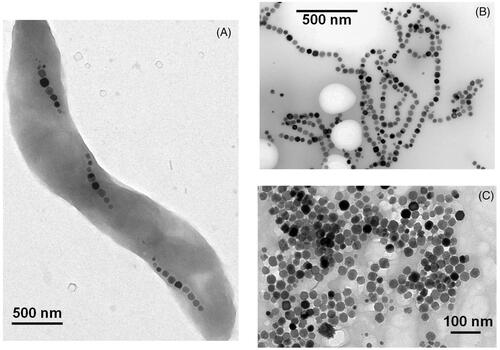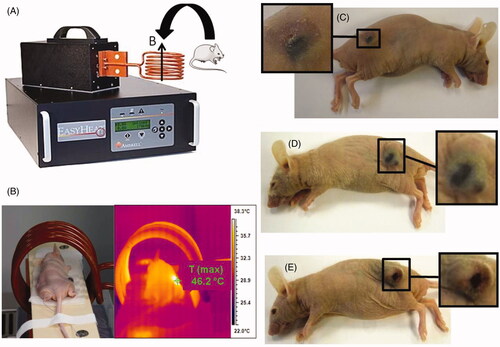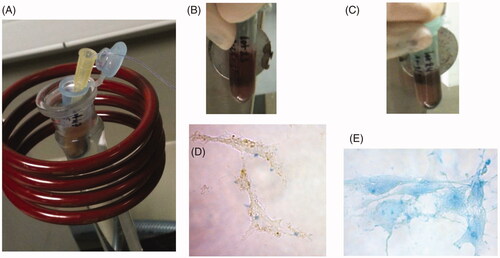Figures & data
Figure 1. Transmission electron microscopy images of whole MTB (A), chains of magnetosomes isolated from MTB (B), and individual magnetosomes detached from the magnetosome chains by heat and SDS treatment (C).

Figure 2. The set-up used to carry out the treatment of the mice by positioning the mice inside the copper coil and by applying an alternating magnetic field (A). The measurement of the temperature during the treatment (B). Photographs of the mice treated with a suspension containing chains of magnetosomes (C), individual magnetosomes, (D), or superparamagnetic iron oxide nanoparticles (SPION) (E).

Figure 3. The set-up used to expose a suspension containing chains of magnetosomes mixed with MDA-MB-231 cells to an alternating magnetic field of average magnetic field strength of ∼20 mT and frequency of 198 kHz (A). A photograph showing this suspension placed next to a magnet before the application of the alternating magnetic field (B), or after the application of the alternating magnetic field for 5 min (C). Micrographs of MDA-MB-231 cells incubated with a suspension containing chains of magnetosomes for 3 min (D), or 24 h (E).

Figure 4. Micrograph of a tumour tissue collected after the administration of the bacterial magnetosomes and three applications of an alternating magnetic field of average strength (20 mT) and frequency of 198 kHz for 20 min. The bacterial magnetosomes administered were individual magnetosomes (A), or chains of magnetosomes (B), (C). (C) is an enlargement of (B) and shows bacterial magnetosomes internalised within tumour cells.
